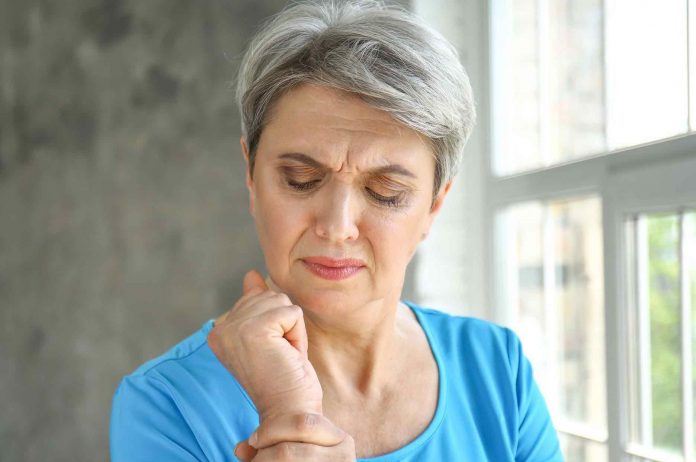A seven year study has found that bazedoxifene, a component of Duavee, manufactured by Pfizer, Inc., is safe for the treatment of osteoporosis. The medication was approved by the Food and Drug Administration. The findings of the new study were published online on February 9 in the journal Menopause.
The study group comprised 7,942 women who were randomly assigned to receive a daily dose of bazedoxifene 20 mg, bazedoxifene 40 mg or a placebo. The investigators found that bazedoxifene at a dosage of 400 or 20 milligrams significantly reduced the risk of new vertebral fractures by 42% (40 mg dose) and 37% (20 mg dose), compared to the placebo in postmenopausal women with osteoporosis. This study evaluated the long-term (seven year) effectiveness and safety of bazedoxifene in generally healthy postmenopausal women who suffered from osteoporosis.
The authors note that the last three years of the study marked the second two year extension of the three year multicenter study. During extension I (years 4-5), the women receiving bazedoxifene 40 mg transitioned to bazedoxifene 20 mg. In extension II (years 6-7; 1,530 women), all bazedoxifene-treated women continued bazedoxifene 20 mg. The main outcome measurements included year seven endpoints: incidences of new vertebral and non-vertebral fractures, bone mineral density changes, and safety evaluations.
The investigators found that after seven years,7 years, the cumulative incidences of new vertebral fractures were significantly lower in the bazedoxifene 40 mg (6.4%) and bazedoxifene 20 mg (7.6%) groups than in the placebo group (9.9%); the relative risk reductions for a fracture were 36.5% (40 mg dose) and 30.4% (20 mg dose). However, bazedoxifene had no effect on the overall incidence of non-vertebral fractures (bazedoxifene 40 mg: 11.2%; bazedoxifene 20 mg: 12.0%; placebo: 10.8%). The average changes from baseline in lumbar spine bone mineral density were 2.95% (40 mg dose), 2.73% (20 mg dose), and 2.19% (placebo). Seven-year decreases in total hip bone mineral density were significantly less in the bazedoxifene 40 mg (–1.15%) and bazedoxifene 20 mg (–1.19%) groups than in the placebo group (–2.53%;2). Over the seven year period, bazedoxifene was found to have a favorable safety/tolerability profile, with similar adverse events, serious adverse events, and study discontinuations in all groups.
The authors concluded that the effectiveness and safety of bazedoxifene prevailed for seven years in postmenopausal women with osteoporosis.








